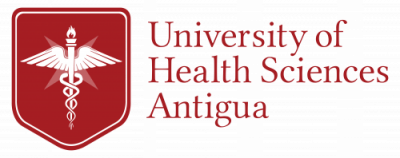What Specialty Should You Choose?
This is a question that many premedical and medical students ask themselves. This can be one of the most important decisions you will make in your career.
Medical school provides you the opportunity to explore several specialties during your two years of clinical rotations. Medical students spend the second half of their medical school career rotating through six required specialties that all medical students must undertake. These include family medicine, internal medicine, general surgery, psychiatry, obstetrics and gynecology, and pediatrics. The remaining time is spent undertaking elective rotations as you explore specialty choices.
But the roughly seventy-eight weeks you spend in rotations is not enough to expose you to all of the medical specialties and subspecialties that are currently available. A specialty is the primary area in which you train, such as pediatrics. While a subspecialty is additional training in your primary specialty that allows you to develop specific competencies. For example, a pediatrician can do subspecialty training in pediatric rheumatology, pediatric gastroenterology, pediatric infectious diseases, and so forth. The subspecialty training is referred to as a fellowship.
So Many Specialties and Subspecialties to Choose From
There are currently twenty-six primary specialties recognized by the American Board of Medical Specialties. However, by the time you add in the 133 subspecialty options, there are a total of 159 options for medical students to choose from in the United States.
This is a bewildering choice for medical students. But don’t despair, I have some advice for you on how to choose your medical specialty.
Choose a Primary Specialty First
First of all, remember you have to start with a primary medical specialty before you can consider choosing a subspecialty. That means that you are only looking at choosing from one of the twenty-six primary specialties, which makes it a lot easier.
You Don’t Have to Subspecialize
Second, remember you don’t have to subspecialize! Most doctors don’t, and spend their careers practicing their primary specialty. Completing a fellowship, or becoming a subspecialist, isn’t required.
Explore the Specialties
Third, explore resources to help you learn more about the specialties. I’ve already posted on how medical students can join a number of specialty organizations for free or steeply discounted rates. Plus, each of the specialty organizations have websites that you can explore to learn more.
Match Your Personality to a Specialty
Fourth, take Student Doctor Network’s How to Choose a Medical Specialty quiz. This quiz, which is based on Anita D. Taylor’s well-known book by the same title, will give you insights into how your personality traits fit with the different primary medical specialties. Plus, it’s free!
But remember, just because the quiz tells you to be a colon and rectal surgeon, doesn’t mean that you have to pursue that specialty. Ultimately, it’s up to you — but the book and quiz can be a valuable guide to help you get started exploring the different specialties.
Choose a Medical School
Choosing a medical specialty isn’t the only thing you need to be concerned about. You also need to make sure you choose the best medical school. A good medical school, one with a reputation for quality, with a long-history of producing excellent physicians, is critical to your future. UHSA is just such a school!
We’ve been producing physicians since 1982. In fact, we’re the second oldest private medical university in the Caribbean.
Our direct entry medical program is ideal for those who are university graduates and have the necessary pre-requisites to attend medical school.
Our combined MD/Masters of Public Health (MPH) program is for those who would like to enhance their credentials, work in public health or preventative medicine, or pursue a career in international health. Plus, it may offer access to student loans for those who qualify.
And finally, for those who are high school graduates, or who lack the premedical courses required for entry into medical school, our accelerated premedical program is the fastest route to a medical career. It will give you the courses you need for direct entry into the MD program.
Ready to join the UHSA family? Then welcome home! Contact our Admissions Team today to get started.

